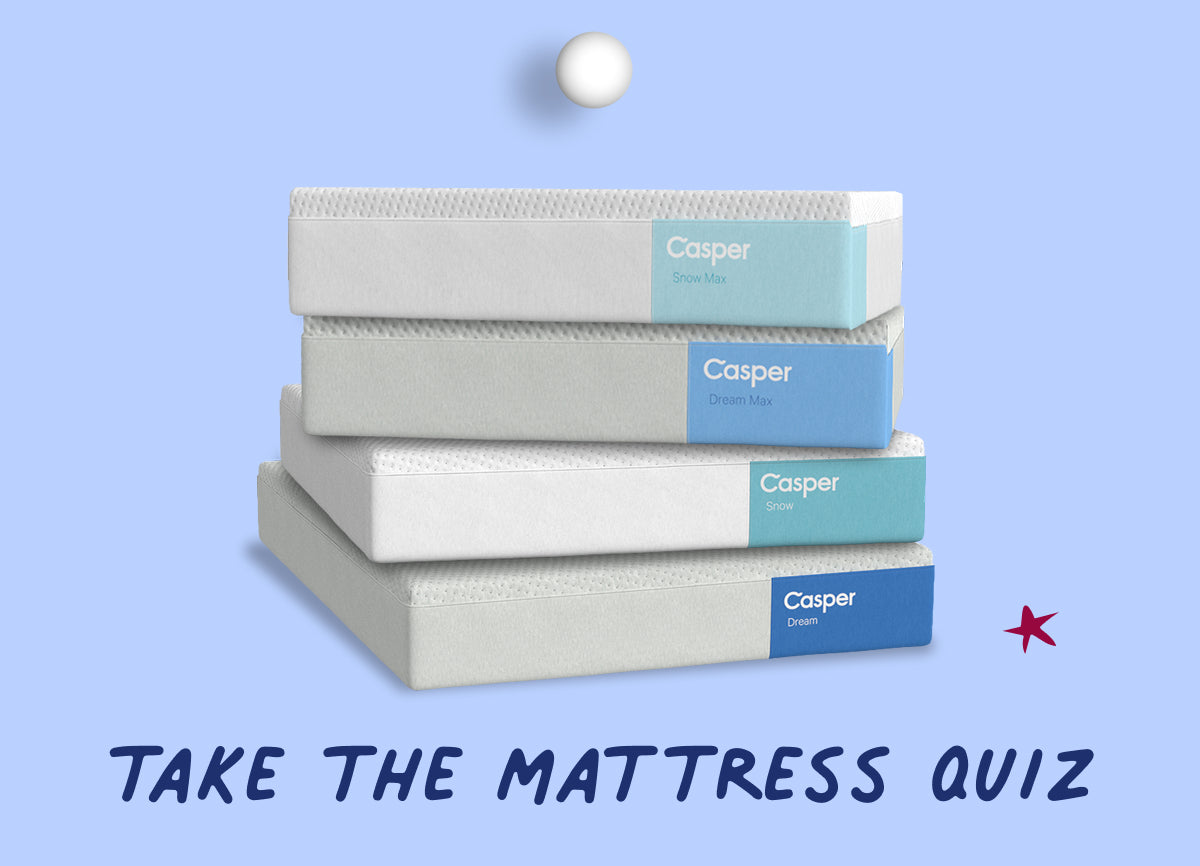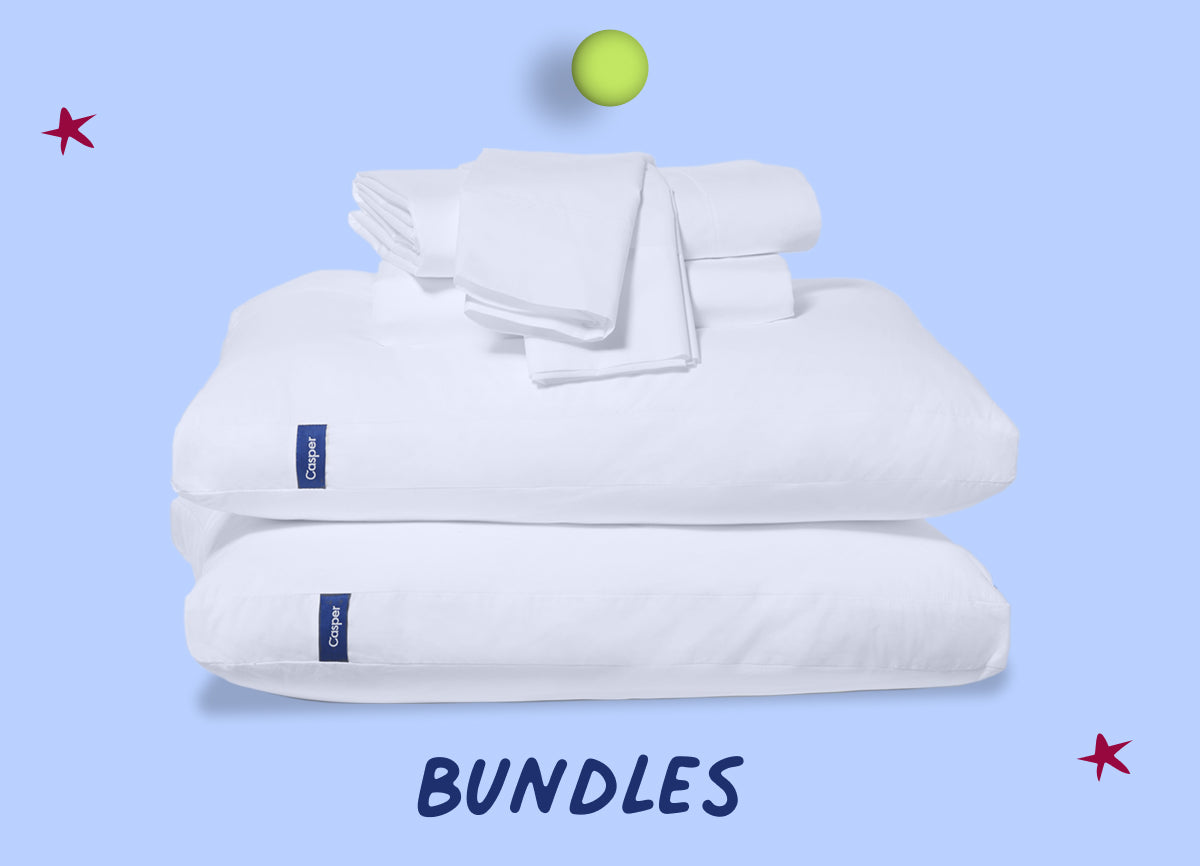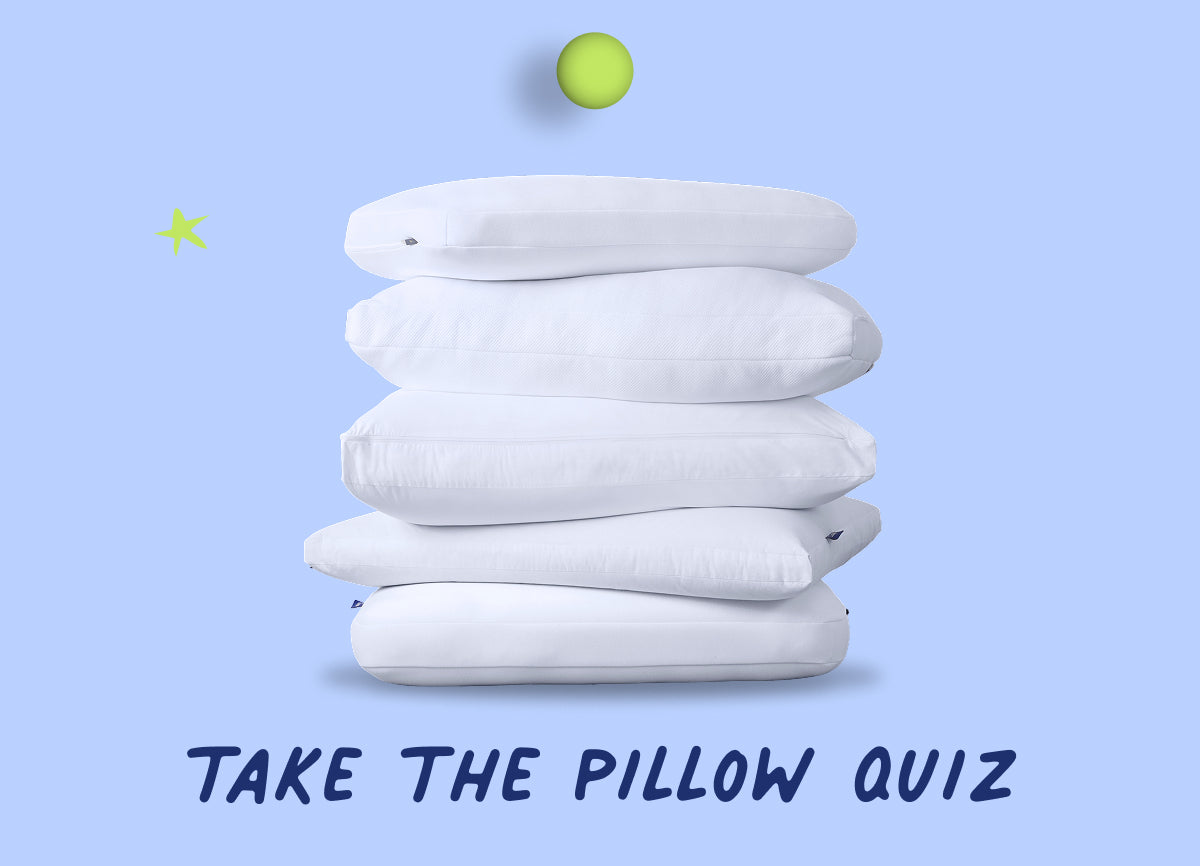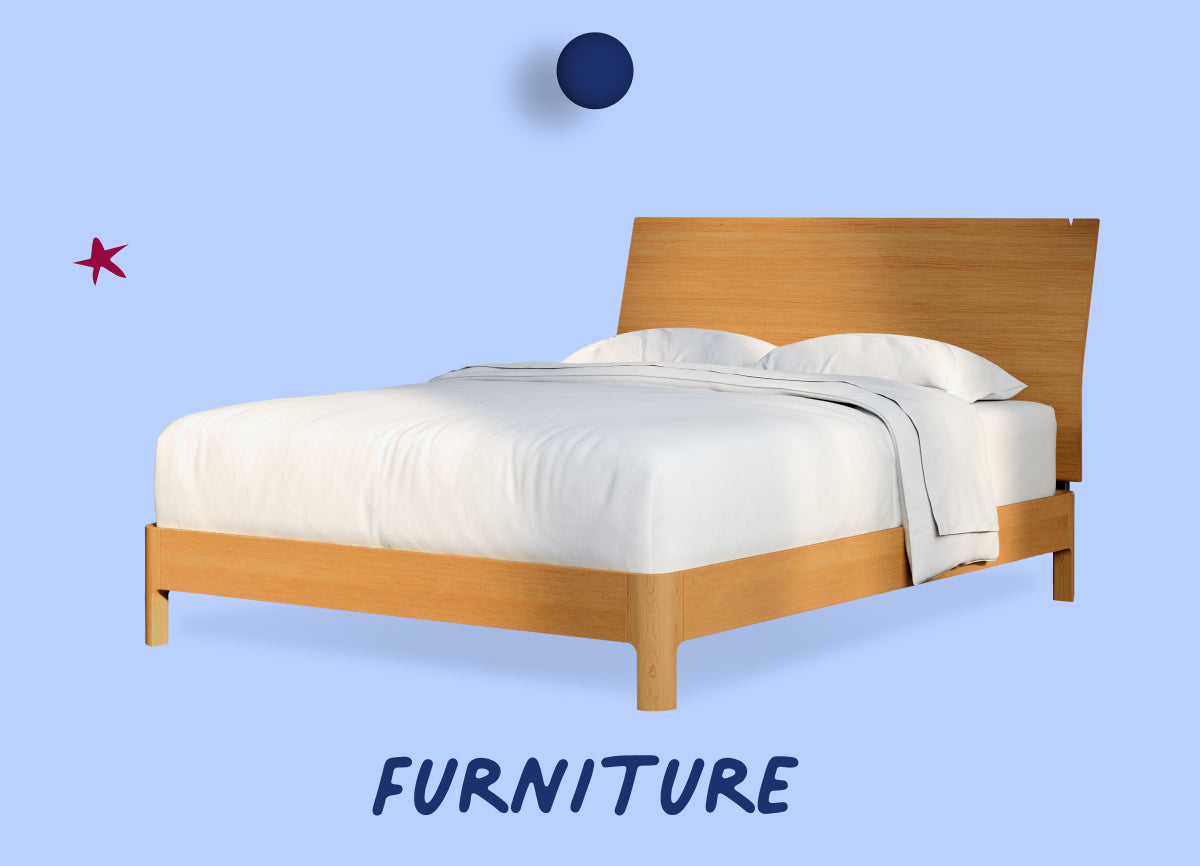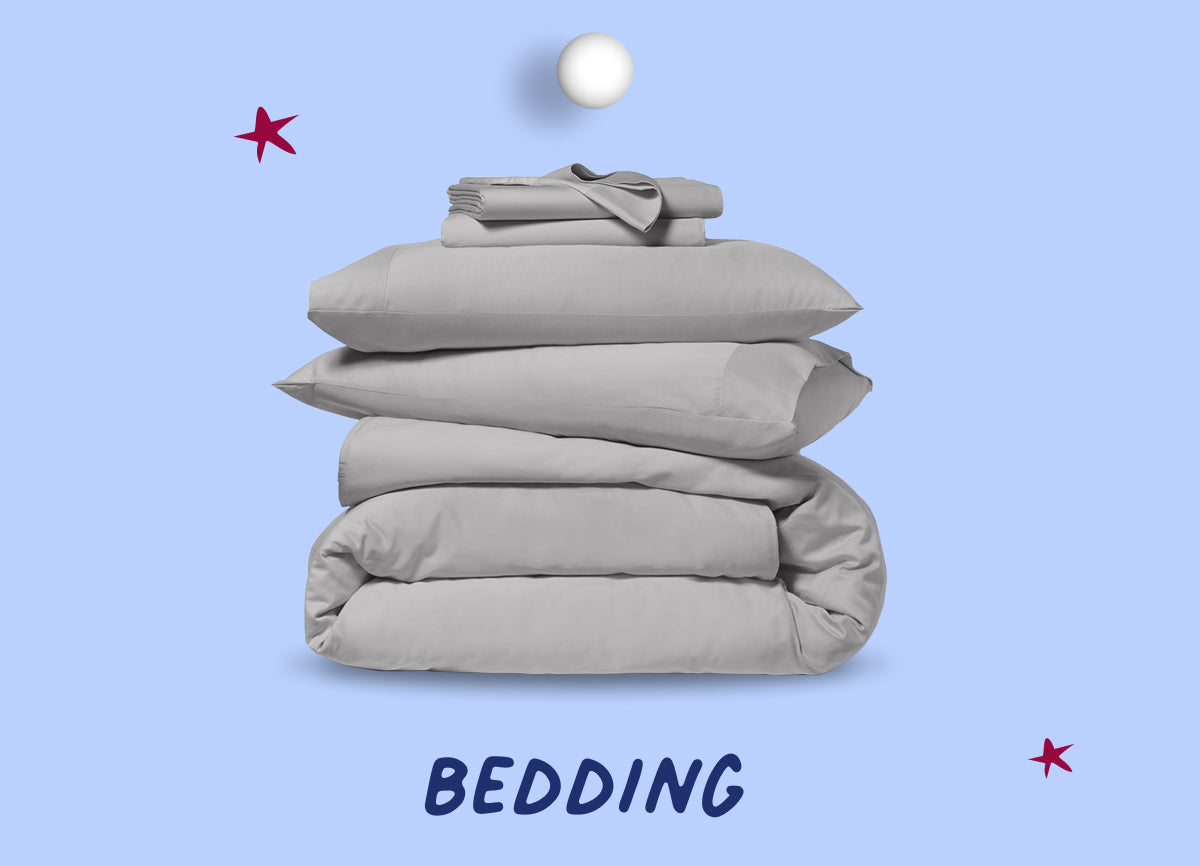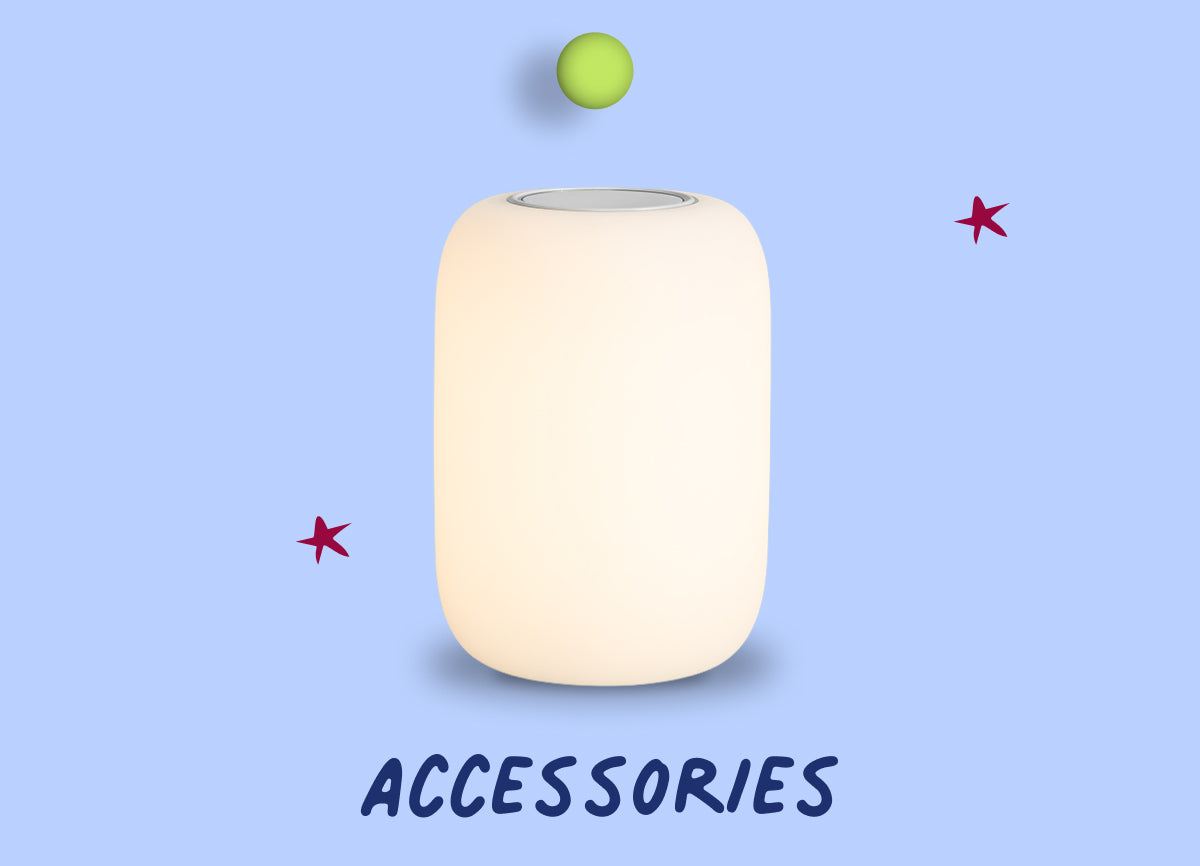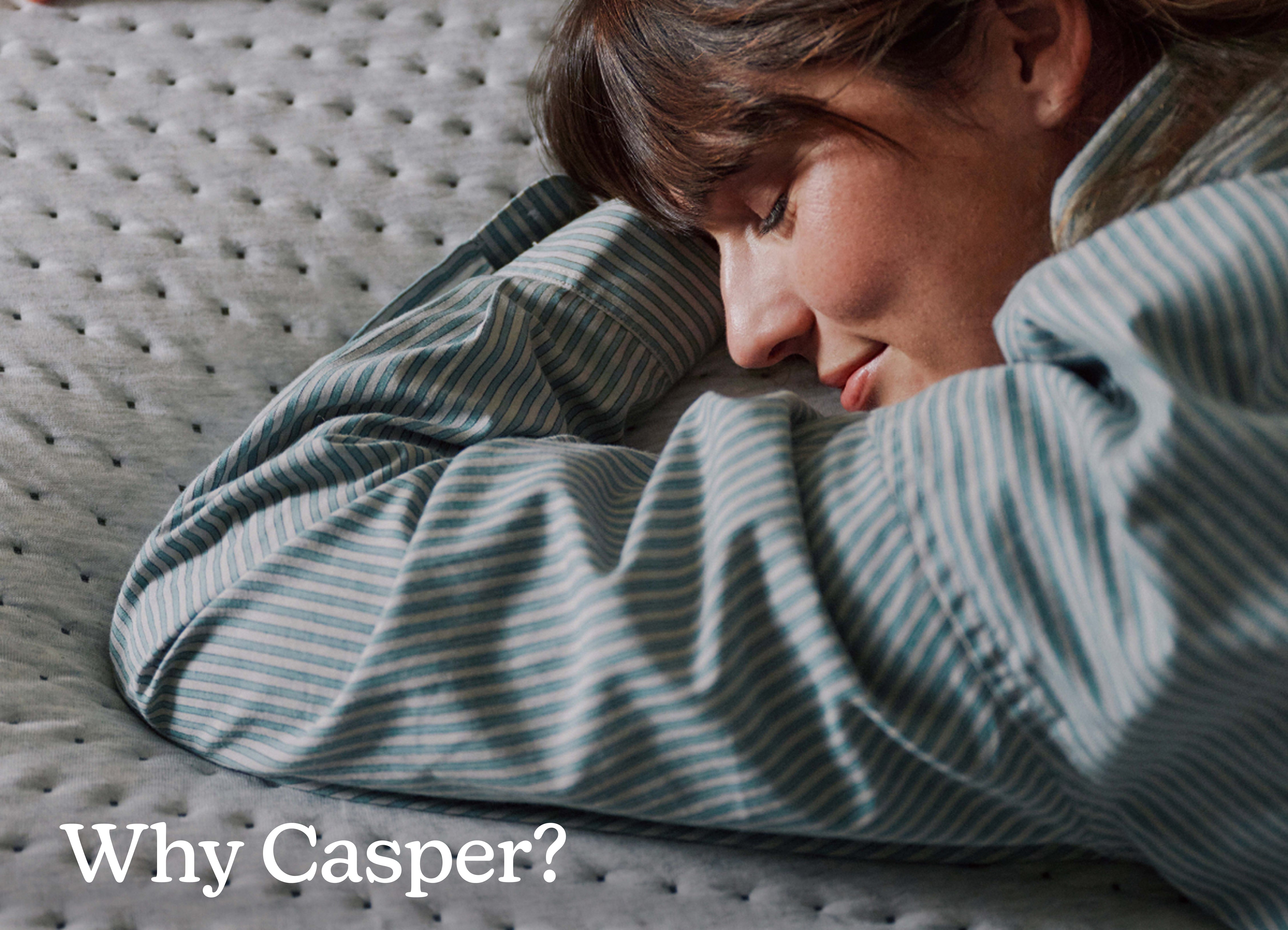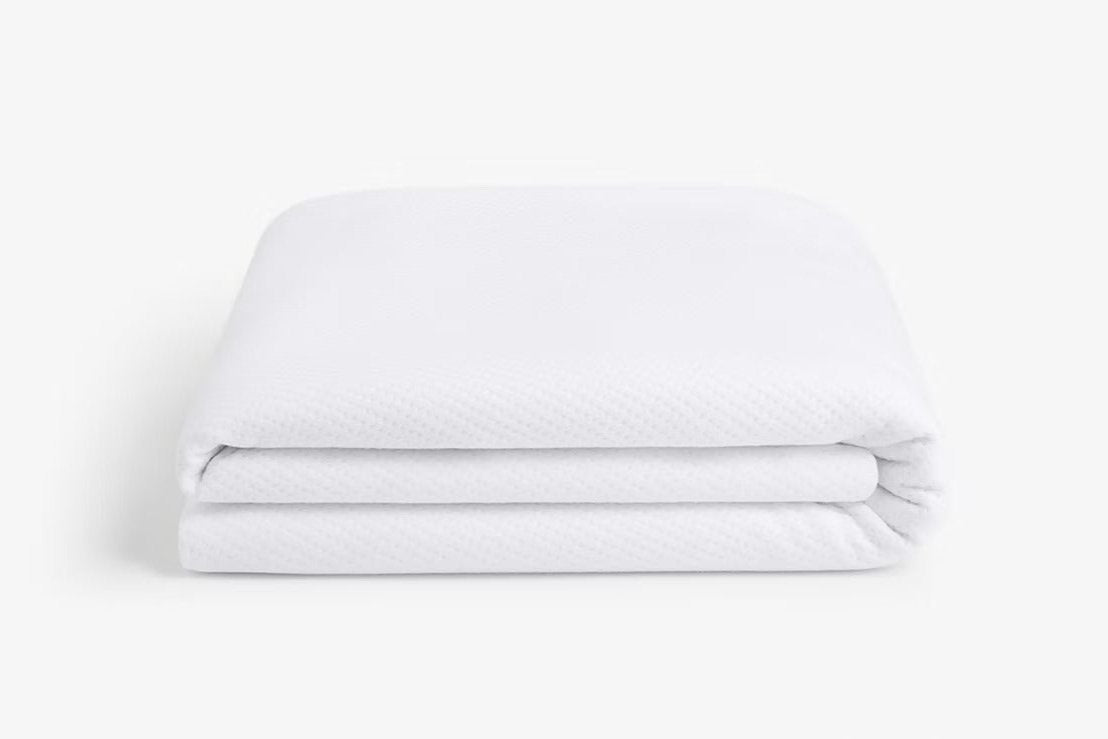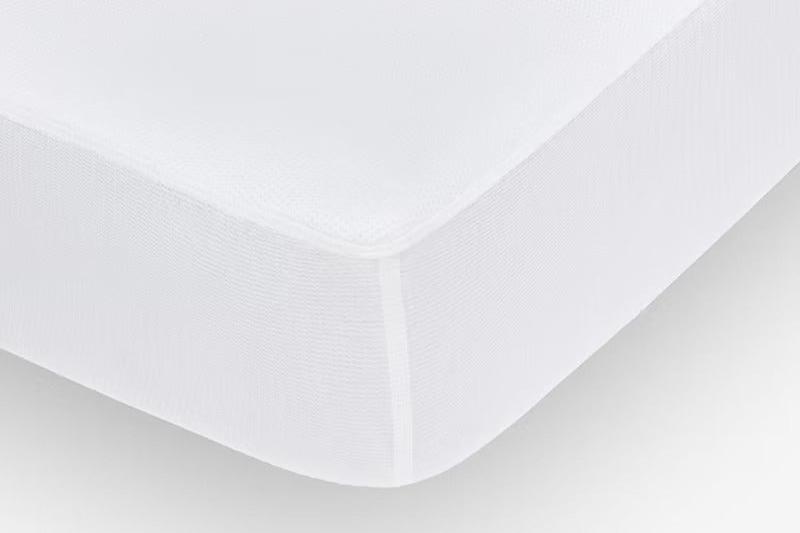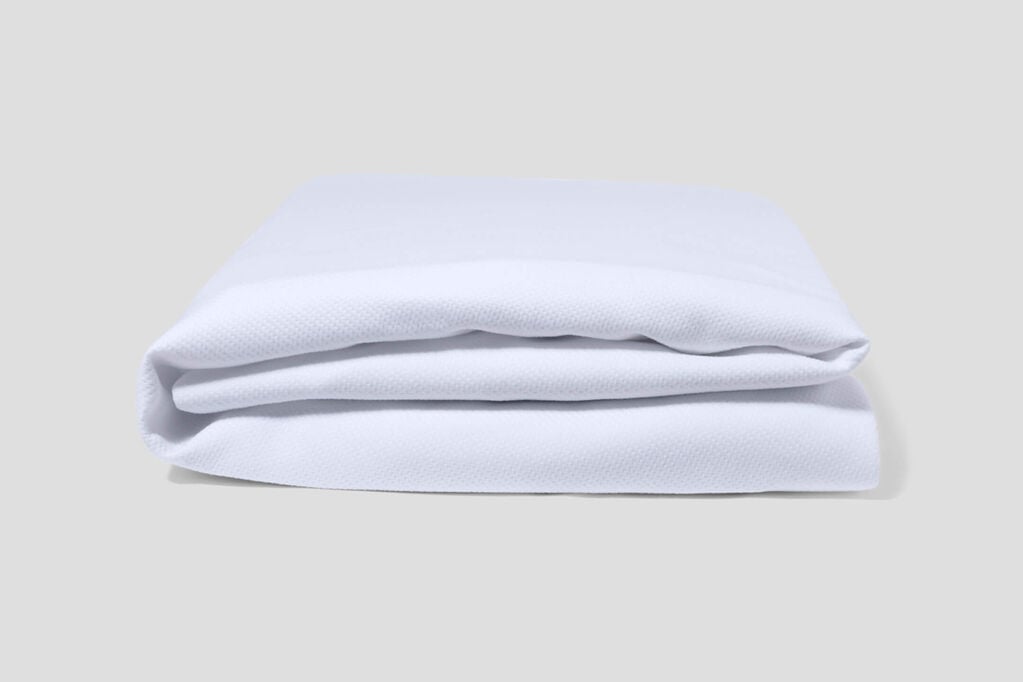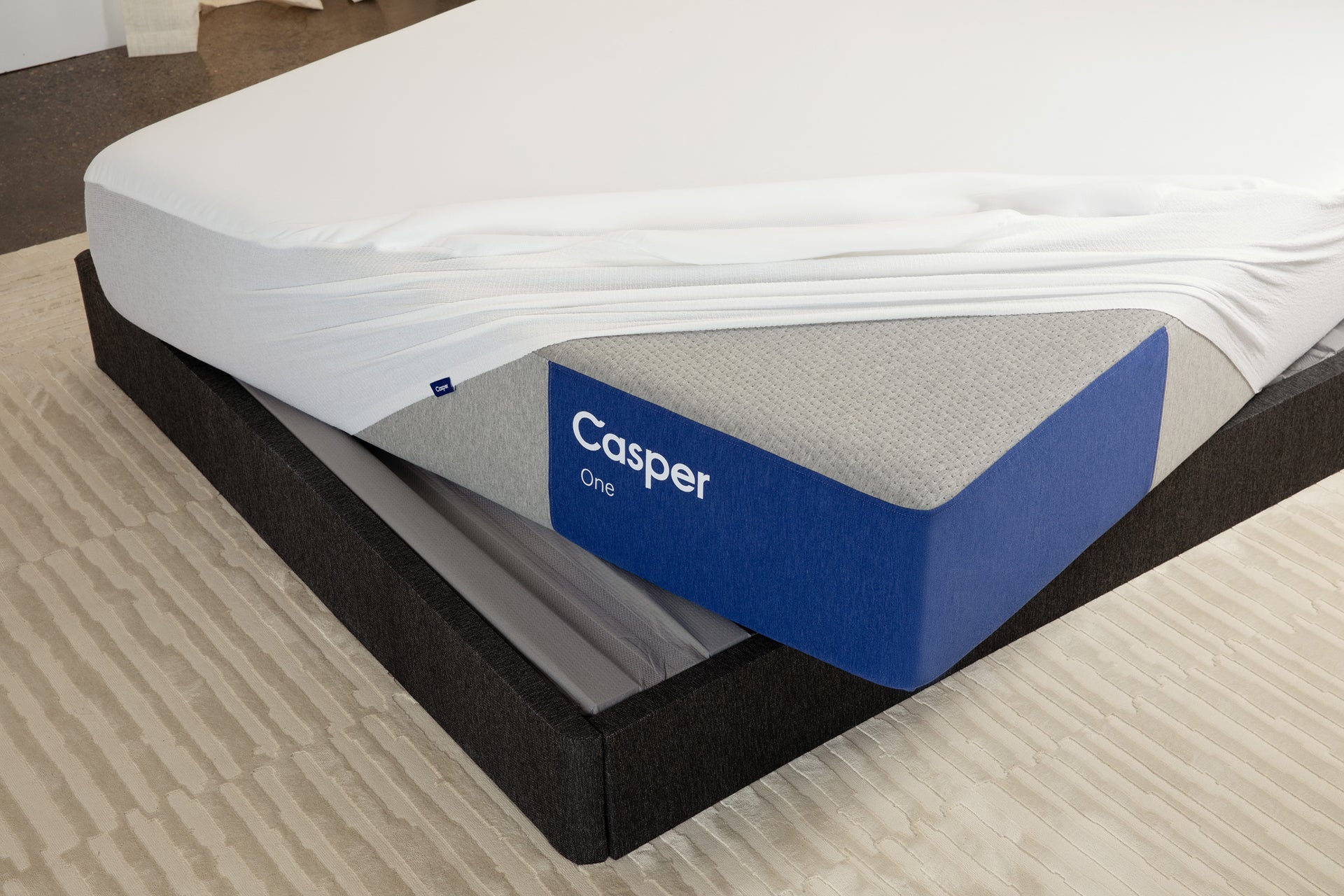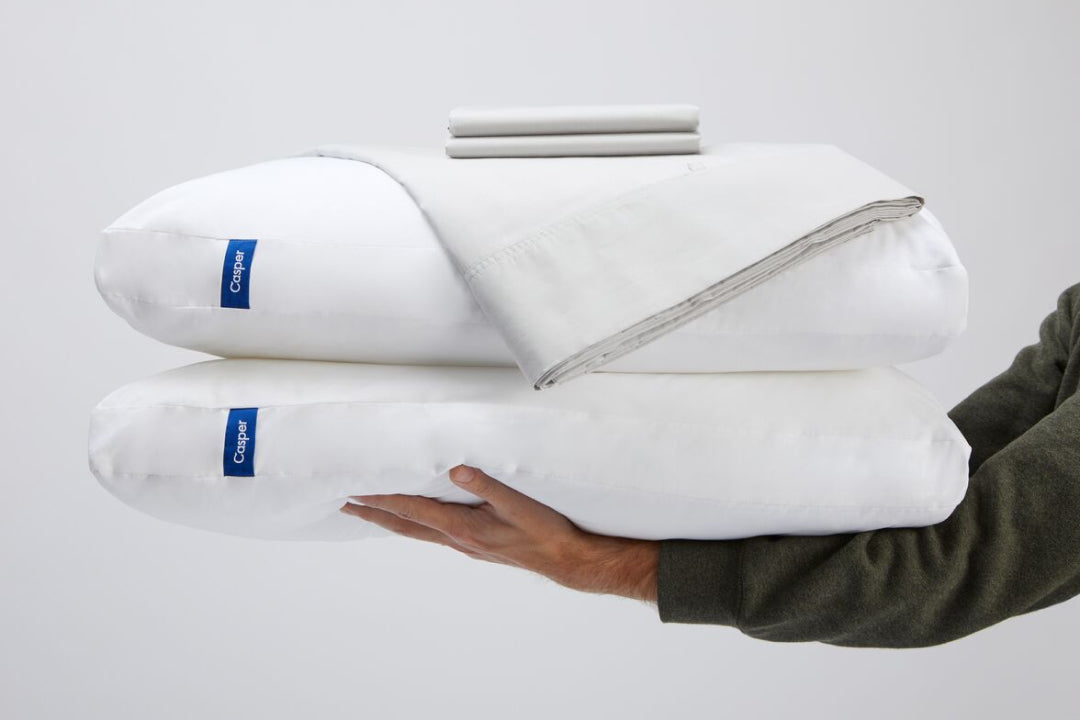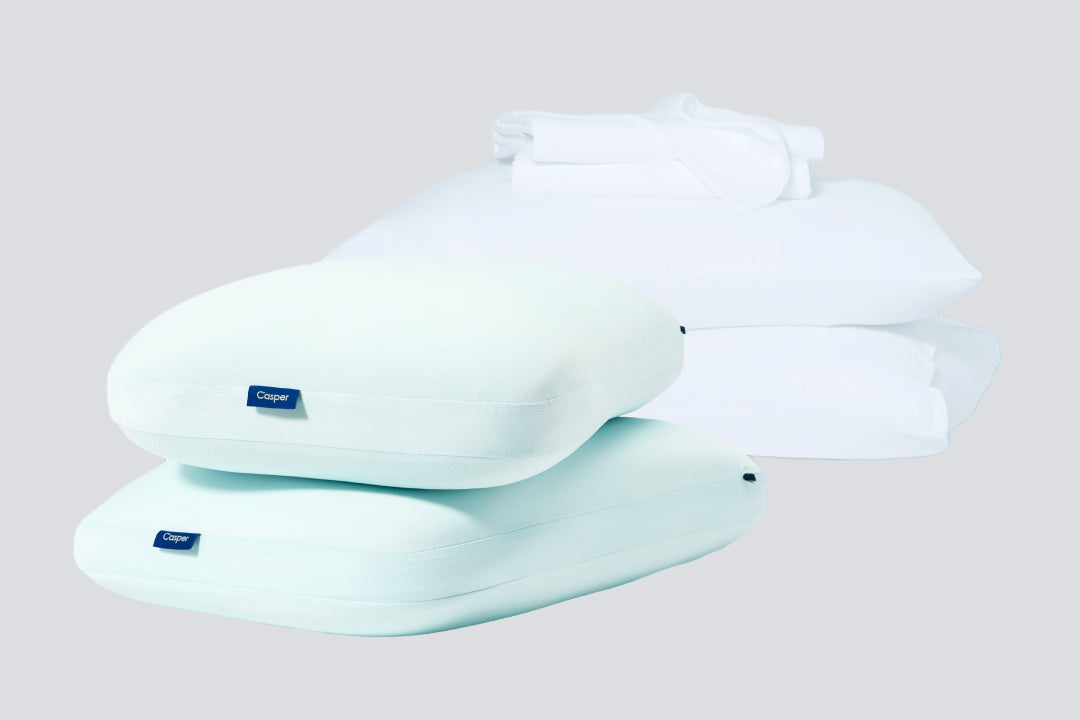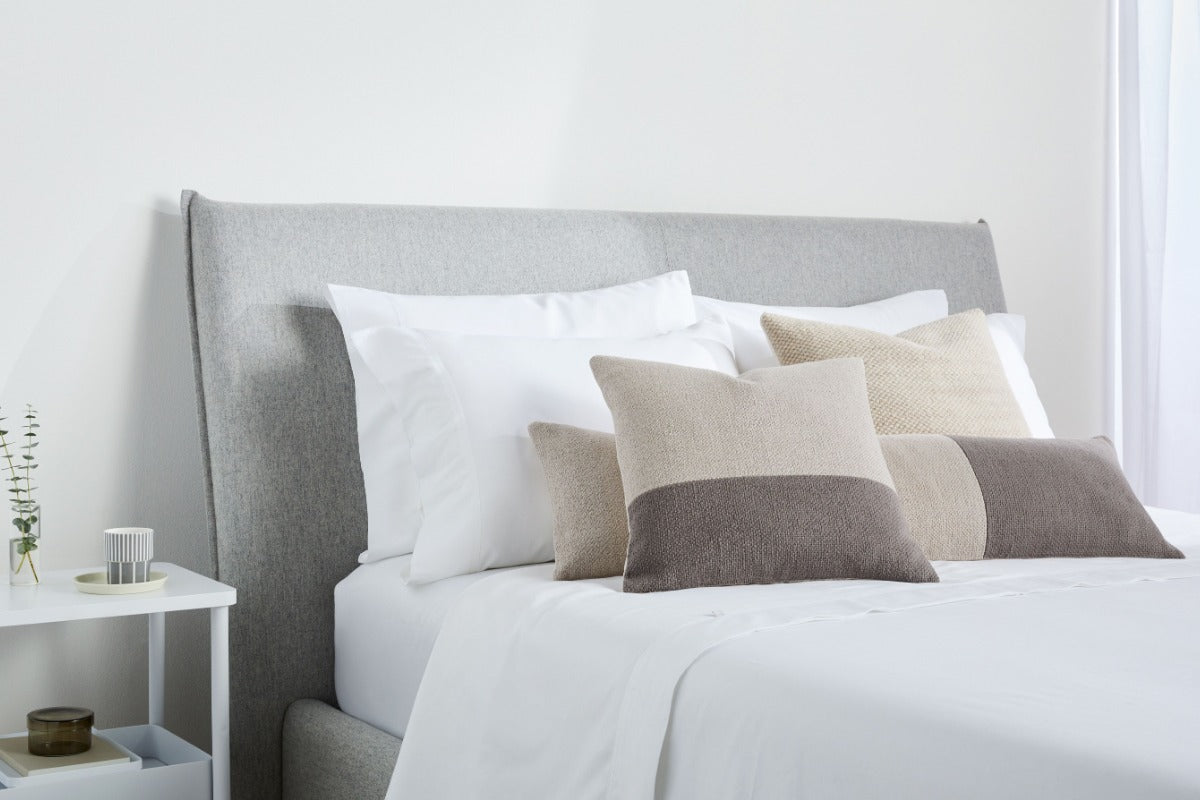Beds are meant for sleep and rest (and often a good read). They’re your personal safe haven. You want them to be clean, fresh, and well-kept. But sometimes, life creeps up on your mattress in messy forms—wine spills, pet dander and accidents, and even debris can all make a mark. Hence, the need for mattress protection.
Before you know it, a deep stain might be your permanent bedside companion. So how can you shield your entire mattress from these messy mishaps?
Enter the mattress protector—a protective fitted sheet that works to shield your sleep surface against common spills and accidents. But what exactly is a mattress protector for? And should you invest in one? This guide answers these questions and more.
Keep your mattress in pristine condition by protecting it from dirt, spills, and more.
Mattress Protector 101
Think of a mattress protector, also called a mattress cover, like a durable fitted sheet, lying between your actual bed sheets and your mattress surface (or pad). And yes, there is in fact a difference between a mattress pad vs mattress protector. If an unwelcome substance tumbles onto your bed—orange juice, for example—your mattress cover creates a barrier. That juice will stop at your sheets, leaving your mattress unscathed.
Most mattress protectors cover the top and sides of the mattress. Sometimes, they also cover the bottom. But not all protectors are created equal. To that end, let’s explore the types, benefits, and quality metrics of a mattress protector.
What Is a Mattress Protector For?
Physically, it’s easy to understand how a protector “shields” your entire mattress. But besides stain protection, what is the purpose of a mattress cover?
From water-resistance to anti-allergenic properties, mattress protection cuts down cleaning costs and supports quality sleep. Depending on material, they can ward off a number of threats to your sleep cycle and mattress integrity. These include but are not limited to:
- Liquids and stains
- Bed bugs
- Dust mites
- Bacteria
- Other allergens
- Sweat
- Overheating
Most sleepers use mattress protectors solely as a waterproof barrier to keep moisture at bay, but don’t sell yourself short. Hypoallergenic types, like our Casper Mattress Protector, can improve your overall hygiene and health while still preserving your bed’s longevity.
Our point? A fitted protector can serve many purposes beyond just keeping your bed clean and free of moisture.
What Types of Mattress Protectors Are There?
Mattress protectors typically break down into two factors—fit and material. Usually, a protector shouldn’t leave a single inch of exposed mattress surface. However, you can consider a few different models to outfit your sleep surface:
- Encasement – With a big zipper, a mattress encasement completely surrounds your mattress. They’re slightly harder to fit or remove, but they provide 360-degree protection against all stains, dirt, and bed bugs or mites.1
- Fitted – Like a fitted bed sheet, a fitted protector covers the top, sides, and partial bottom of your mattress. While leaving some exposure below, fitted protectors are simple stain blockers and easy to remove. Here at Casper, this is our go-to.
- Anchor or elastic strap – Offering the least coverage, these protectors only cover the top of the mattress. Elastic straps on the mattress corners hold this single-surface barrier down.
Just like fit, a protector’s material can impact your mattress coverage and sleep quality. And when it comes to material, you’ve got a lot more options to choose from. Depending on your needs, you can find mattress protectors in a range of natural and synthetic materials like:2
- Cotton
- Wool
- Polyester
- Vinyl
- Polyurethane
- Latex
- Spandex
Every material has its defining characteristics. Natural choices—like cotton and wool—are noiseless and can conserve or cool your body’s temperature. And for the green-conscious buyer, these materials are usually organic and hypoallergenic.
However, if you want the strongest protection against spills, you should look to waterproof protector materials like vinyl or polyester. At Casper, we designed our Waterproof Mattress Protector to stop accidents in their tracks and provide restful sleep. Our thermoplastic polyester and spandex create a cooling, crinkle-free layer that fits all bed sizes and mattress depths up to 16 inches. Whether your mattress size is a twin or California king, we’ve got you and your mattress covered.
What Should I Look for in a Mattress Protector?
To answer, you need to ask another question—what matters most to your sleep and mattress life?
For those with kids, you might prioritize sure-fire protection against happy accidents (no more scrubbing out unidentified sticky matter). For those with seasonal sensitivities, a hypoallergenic cover will bring peace to your slumber.
It’s paramount that you consider all of your mattress protector choices when shopping:
- Waterproofing – A priority for most bed owners, and for good reason. At Casper, we recommend a Waterproof Mattress Protector. Otherwise, any spill could mean tiresome cleaning at the least, or a ruined mattress at the most. And we don’t know about you, but buying a new mattress prematurely doesn’t sound like the most ideal case. With Casper, you can sleep easy knowing that your mattress will definitely be covered.
- Cleaning ability – Some sleepers love organic materials for their sensitivity and eco-friendliness, but may be wondering how to wash a mattress protector without compromising its structure. For regular or emergency washing, an organic mattress protector may not clean as easily. Always consider machine washing and dryer compatibility.
- Temperature and air flow – Sweating at the thought of sleeping on more layers? Certain mattress covers have thermodynamic or sweat-wicking materials for ultimate breathability—i.e., you’ll be cool through the night. If your temperature tends to run high, pay attention to this factor. If breathability is important to you, you might want to consider our Breathable Mattress Protector, made to allow air to move easily between you and your mattress.
- Comfort – Squeaking, rubbing, and itching are no-go’s in the bedroom. Your mattress protector should enhance your sleep comfort, not decrease it. Pick a material that works with your skin, body, and sensitivity.
Do I Need a Mattress Protector?
Now that we’ve answered the question of “what is a mattress protector” you may be wondering if having one is a necessity. The short answer? Yes. The long answer? Mattress protectors are your bed’s seat belt. Without one, you’re simply putting your mattress at a higher risk for damage, which could ultimately work against your mattress warranty. But with expertly crafted bed materials like Casper’s, your mattress can stay clean and plush for years to come.
And if you’re currently looking for some sort of mattress encasement protector, you’re in the right place. Our mattress protector selection was designed to keep your sleep safe and comfortable.
Sources:
- The Better Sleep Council. Your Mattress Deserves a Hug. https://bettersleep.org/mattress-education/mattress-accessories/mattress-pads-protectors-encasements-toppers/
- Slavin, Tonya Mozias. Mattress Protectors: A Buyer’s Guide. https://www.saatva.com/blog/mattress-protector-guide/

